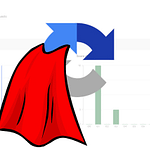Email marketing (automation) basics
Email marketing automation has become a crucial aspect of every campaign manager’s day-to-day work. Whether you’re using any email marketing automation platform, understanding the fundamentals is essential. This guide covers the basics that are shared across all platforms, ensuring you have a solid foundation in email marketing automation.
Multichannel interaction
Reach your recipients through various online and offline channels, such as email, push notifications, social media, and even printed letters. By utilizing multiple channels, you can engage with your audience effectively.
Omnichannel approach
While similar to multichannel marketing, the omnichannel approach emphasizes the customer journey. It focuses on delivering content seamlessly across various touchpoints, using the customer’s preferred channel and following company guidelines.
Internet Service Provider (ISP)
An ISP is the entity responsible for providing internet access to users. Understanding ISPs is crucial when it comes to email deliverability and complying with their guidelines.
Email Service Provider (ESP)
An ESP is a specialized part of an ISP that offers email domain hosting services, such as Gmail, Yahoo Mail, AOL, and Outlook.com. Working with ESPs helps ensure proper email delivery and management.
Transactional email
Transactional emails are user-initiated or sent after a commercial transaction. They do not require marketing consent and include emails like password resets, account creation confirmations, double opt-ins, receipts, shipping information, and refunds.
Preheader
The preheader is the initial text displayed under the email subject line in the recipient’s mailbox. Crafting an engaging preheader can entice recipients to open your emails. I have found very nice article about preheader implementation.
General Data Protection Regulation (GDPR)
GDPR is a privacy and security law in the European Union that safeguards customer data. Complying with GDPR regulations is essential when conducting email marketing campaigns.
Comprehensive Consumer Data Privacy (CDPA)
CDPA is a customer privacy and security law in the United States. Understanding and adhering to CDPA regulations is crucial for email marketers targeting a U.S. audience.
California Consumer Privacy Act (CCPA)
CCPA is a California-specific privacy law that focuses on protecting consumer data. Complying with CCPA is vital if you target audiences in California.
Initial population
The initial population refers to the segment of customers you intend to target with your email content.
Terminology used in Adobe Campaign.
Processed / sent emails
This term refers to the initial population after applying exclusions, such as opt-outs, blacklisted recipients, or a control group being tested by the email server.
Terminology used in Adobe Campaign.
Delivered emails
Number of emails delivered to recipients
Bounced emails
Emails that have been sent but failed to deliver due various reasons.
In email marketing or ISP distinguish two different types of bounces hard and soft. Hard bounce is that the email account will always fail to receive an email e.g. user does not exist, domain does not exist. It permanent error and thus this email address will be automatically quarantined. Soft bounce means that the email account is at this moment unavailable due various reasons e.g. mail box full.
Opens
How many opens your email send out have received in total.
Distinct opens
How many unique recipients have opened the email send out at least once
Terminology used in Adobe Campaign.
Open rate
Email opens divided by total emails sent
OR = (Unique opens / Emails sent) * 100 [%]Over 25% is considered as good open rate. Average is 18 to 22%
Clicks
How many clicks your email have received in total
CTA
Call to action – link inside the email that is being tracked.
Distinct clicks
Unique recipients’ clicks for an email. Every html link (CTA) that is tracked inside your email.
Terminology used in Adobe Campaign.
Click-through rate (CTR)
Unique recipient’s clicks to total delivered messages ration. It is calculated by following formula:
CTR = (unique recipient email click / emails delivered in total) * 100 [%]Over 5 % is considered as good CTR. Average is between 2-4 %
Click-to-open rate (CTOR)
Unique recipient’s clicks to unique recipient’s opens ratio
CTOR = (Unique clickc/Unique opens) * 100 [%]Over 15 % is considered as good CTOR. Average is between 10 – 15%
Deliverability
Number of emails reaching inbox or were accepted by ISP
Complain rate
Number of emails that raised complaint via the ISP. Usually this is being captured via feedback loop coming back from ISP.
Everything above 1 compliant per 1000 emails sent is considered as bad. The marketing content and strategy has to be corrected.
Double opt in
Every time recipient submits their email address on your landing or corporate page. You would like to know if that email is functional so will be prevent from hurting your IP reputation. You most probably will send confirmation email with link to activate their account for subscription.
Double opt out
As you want your subscriber to confirm their email you want them to confirm their opt out by submitting a form on landing page. You can also add different options to opt out landing page for example to choose to unsubscribe from different newsletters or choose to receive less emails or put your subscription on pause for next upcoming months. If nothing helps you can ask to fill up the form so you can improve your newsletter services.
Customer journey / campaign
Is a sequence of marketing activities where between them different logical conditions can be applied to your journey recipients (contact). For example you can send scheduled email then select all that have not open the email and send them another copy with different subject line. Or reward openers with additional email with premium information.
A/B testing
Is process of sending two variations of a email creative to a subset of your subscriber’s segment to decide later on winner creative that will be sent to remaining of your segment. You can for example test different subject line by measuring unique open rate, CTA by click trough rate
This list will be expanding in the future. If there are terms that you want to be added? Let me know in the comments.












